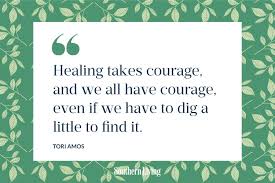Visualization therapy, also known as mental imagery or guided imagery, is a technique used by therapists to help clients visualize positive outcomes and overcome negative thoughts and emotions. The technique involves creating a mental picture of a desired outcome, such as achieving a goal or overcoming anxiety, and using that image to focus the mind on positive thoughts and feelings.
Visualization therapy has been shown to be effective in treating a variety of conditions, including anxiety disorders, depression, chronic pain, and post-traumatic stress disorder (PTSD). In fact, some studies have found that visualization therapy can be just as effective as medication in treating these conditions.
One reason visualization therapy is so effective is that it allows individuals to tap into the power of their own minds. By creating vivid mental images of positive outcomes, individuals are able to activate the same neural pathways that would be activated if they were actually experiencing those outcomes. This helps to create new neural connections in the brain and reinforce positive thought patterns.
Visualization therapy can also help individuals develop greater self-awareness and self-confidence. By visualizing themselves achieving their goals or overcoming obstacles, individuals are able to build a sense of competence and mastery over their lives. This can help them approach challenges with greater confidence and resilience.
To practice visualization therapy, individuals typically work with a therapist who guides them through the process. The therapist may use scripts or prompts to help individuals create detailed mental images of positive outcomes. For example, an individual with social anxiety may be guided through a visualization exercise where they imagine themselves confidently interacting with others in social situations.
Individuals can also practice visualization therapy on their own by setting aside time each day to visualize positive outcomes. This might involve creating a mental picture of oneself achieving a specific goal or engaging in an activity that brings joy and fulfillment.
In conclusion, visualization therapy is a powerful tool for promoting mental health and well-being. By harnessing the power of our own minds to create positive mental images, we can overcome negative thoughts and emotions and achieve our goals with greater confidence and resilience. If you are struggling with anxiety, depression, or other mental health challenges, consider working with a therapist who can guide you through the process of visualization therapy.
Frequently Asked Questions About Visualization Therapy: Techniques, Benefits, and Types
- Is visualization a CBT technique?
- What are the benefits of visualization therapy?
- What type of therapy uses visualization?
- What is Visualisation therapy?
Is visualization a CBT technique?
Yes, visualization is a technique used in cognitive-behavioral therapy (CBT). In CBT, visualization is often referred to as “imagery” or “mental imagery” and is used to help individuals change negative thought patterns and behaviors. By visualizing positive outcomes and practicing new ways of thinking and behaving, individuals can learn to overcome negative emotions and improve their mental health. Visualization is just one of many techniques used in CBT, along with other strategies such as cognitive restructuring, exposure therapy, and relaxation techniques.
What are the benefits of visualization therapy?
Visualization therapy, also known as mental imagery or guided imagery, has several benefits for mental and emotional well-being. Here are some of the key benefits of this technique:
- Reduced anxiety and stress: Visualization therapy can help individuals reduce feelings of anxiety and stress by allowing them to focus their attention on positive mental images. By creating vivid mental pictures of calm and relaxation, individuals can activate the relaxation response in their bodies, which can help reduce feelings of tension and anxiety.
- Improved self-confidence: Visualization therapy can help individuals develop greater self-confidence by allowing them to visualize themselves achieving their goals or overcoming obstacles. By creating a mental picture of success, individuals can build a sense of competence and mastery over their lives, which can help them approach challenges with greater confidence.
- Increased motivation: Visualization therapy can also increase motivation by helping individuals create a clear picture of what they want to achieve. By visualizing themselves achieving their goals, individuals can tap into the power of positive thinking and stay motivated to take action towards their goals.
- Better coping skills: Visualization therapy can help individuals develop better coping skills by allowing them to practice responding to challenging situations in a positive way. By visualizing themselves staying calm and focused in difficult situations, individuals can build resilience and develop better coping strategies.
- Improved physical health: Visualization therapy has been shown to have physical health benefits as well. For example, it has been used successfully in pain management by helping individuals reduce pain perception through visualization techniques.
Overall, visualization therapy is a powerful tool for promoting mental and emotional well-being. By harnessing the power of our own minds to create positive mental images, we can overcome negative thoughts and emotions and achieve our goals with greater confidence and resilience.
What type of therapy uses visualization?
Visualization therapy, also known as mental imagery or guided imagery, is a technique used in various types of therapy. It is commonly used in cognitive-behavioral therapy (CBT), which focuses on changing negative thought patterns and behaviors that contribute to mental health issues. Visualization therapy can also be used in other types of therapy, such as hypnotherapy and mindfulness-based therapies. Additionally, visualization techniques can be incorporated into self-help practices, such as meditation and relaxation exercises.
What is Visualisation therapy?
Visualization therapy, also known as mental imagery or guided imagery, is a therapeutic technique that involves using mental images to promote relaxation, reduce stress and anxiety, and improve overall well-being. The technique involves creating a detailed mental picture of a desired outcome or situation, such as achieving a goal or overcoming an obstacle.
Visualization therapy works by tapping into the power of the mind-body connection. When we create vivid mental images of positive outcomes, we activate the same neural pathways in our brain that would be activated if we were actually experiencing those outcomes. This helps to create new neural connections in the brain and reinforce positive thought patterns.
Visualization therapy can be used to treat a variety of conditions, including anxiety disorders, depression, chronic pain, and post-traumatic stress disorder (PTSD). It is often used in conjunction with other therapeutic techniques such as cognitive-behavioral therapy (CBT) and mindfulness meditation.
During visualization therapy sessions, individuals may work with a therapist who guides them through the process of creating mental images. The therapist may use scripts or prompts to help individuals visualize specific scenarios or outcomes. For example, an individual with social anxiety may be guided through a visualization exercise where they imagine themselves confidently interacting with others in social situations.
Individuals can also practice visualization therapy on their own by setting aside time each day to visualize positive outcomes. This might involve creating a mental picture of oneself achieving a specific goal or engaging in an activity that brings joy and fulfillment.
Overall, visualization therapy is a powerful tool for promoting mental health and well-being. By harnessing the power of our own minds to create positive mental images, we can overcome negative thoughts and emotions and achieve our goals with greater confidence and resilience.



